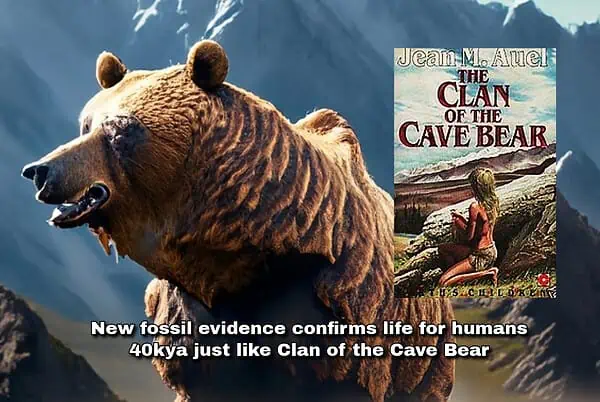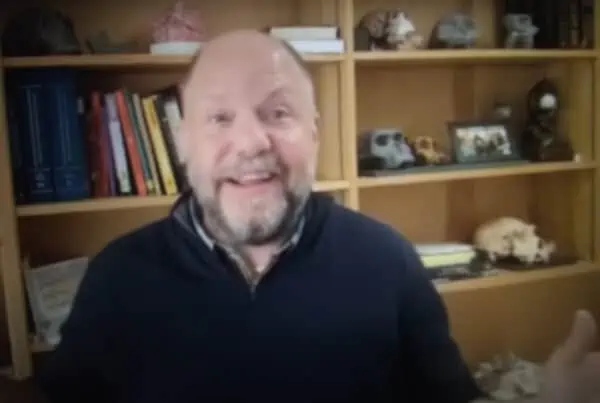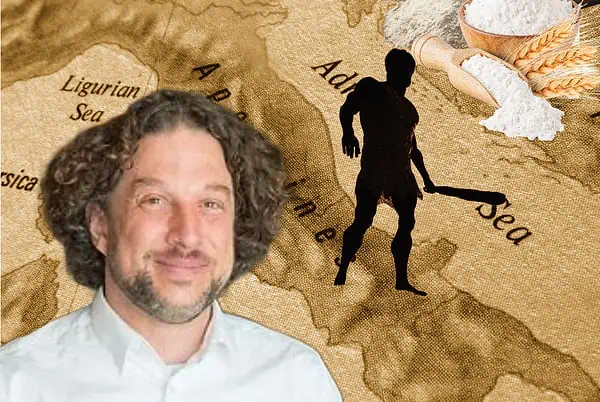Cro-Magnon man alive today?
Trenton Holliday a professor of paleoanthropology at Louisiana State University asserts that Cro-Magnon man lives among us. Professor Holliday asserted on a February 17 podcast of Evolution Soup on YouTube that cranium sizes of some Europeans, “fall within the range of people today.”
Prof. Holliday obtained his PhD studying under the renowned Neanderthal expert Eric Trinkaus.
From his bio:
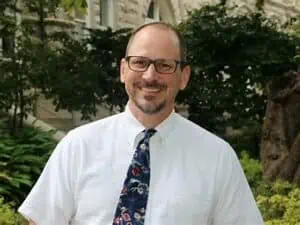 Professor Holliday received his B.A. in anthropology from Louisiana State University in 1988, and his M.A. (1991) and Ph.D. (1995) in anthropology from the University of New Mexico. A paleoanthropologist, he studies fossil hominins from a host of different time periods. He is particularly interested in the origins of modern humans (Homo sapiens), a topic which is intimately tied to the question of the fate of the Neandertals (H. neanderthalensis).
Professor Holliday received his B.A. in anthropology from Louisiana State University in 1988, and his M.A. (1991) and Ph.D. (1995) in anthropology from the University of New Mexico. A paleoanthropologist, he studies fossil hominins from a host of different time periods. He is particularly interested in the origins of modern humans (Homo sapiens), a topic which is intimately tied to the question of the fate of the Neandertals (H. neanderthalensis).
He is also interested in late Australopithecus and the origins of the genus Homo, and in interspecific hybridization among extant mammals and its implications for human evolution. Professor Holliday teaches courses in human evolution, functional morphology, and modern human adaptation and variation.
Note – Prof. Holliday has also been a part-time team member of Lee Berger’s expeditions in South Africa uncovering Homo naledi bones.
Prof. Holliday appeared on an episode of Evolution Soup in February 2024, a monthly interview show on YouTube highlighting academics in evolutionary science. Holliday gave a fascinating summary of Neanderthals, and Ice Age Europe Homo sapiens. He detailed the tactics of hunter gatherers, particularly Mammoth hunters.
Craniology of Early Modern Humans (EMHs) in north Africa and Europe
He also discussed craniology of Early Modern Humans – typically abbreviated as EMHs – in Africa such as Jebel Irhoud, Herto Man and Omo 1 which was discovered by Richard Leakey in 1974 in the Omo region of southern Ethiopia.
From Britannica:
Cro-Magnon, population of early Homo sapiens dating from the Upper Paleolithic Period (c. 40,000 to c. 10,000 years ago) in Europe.
Prof. Holliday then discussed cranium measurements for early Europeans, and held up skull fabrications:
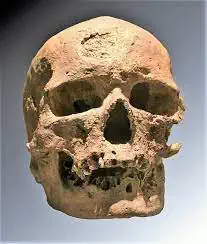 “So, we have humans very early… just outside of Africa in the Levant, in the eastern shore of the Mediterranean. We have humans there at a site like Misliya cave at 194,000 years ago or so, and we also have very important sites as Skuhl and Qafzeh where we have very modern, or nearly modern looking humans at about 100,000 or 129,000 years ago, and then don’t see them in Europe until about 54,000 years ago. This is a so-called early Modern European.
“So, we have humans very early… just outside of Africa in the Levant, in the eastern shore of the Mediterranean. We have humans there at a site like Misliya cave at 194,000 years ago or so, and we also have very important sites as Skuhl and Qafzeh where we have very modern, or nearly modern looking humans at about 100,000 or 129,000 years ago, and then don’t see them in Europe until about 54,000 years ago. This is a so-called early Modern European.
[Holds up a skull from Czechia] This is not the Cro-Magnon specimen. This is from a site in Moravia, the Czech Republic…. the fossa, the nose, a relatively long low cranium, as well.
Molodic 1 about 35,000 years old.
Some of these specimens, these early Europeans fall within the range of people today, and others lie outside of it.” [Emphasis added]
The professor added:
“And for me, that’s not something so surprising. Something 35,000 years ago do we necessarily expect to see it fit within the range of people today. So, I’m fascinated by these Early Modern Humans…”
Neanderthals today: Neanderthal genes in modern humans?
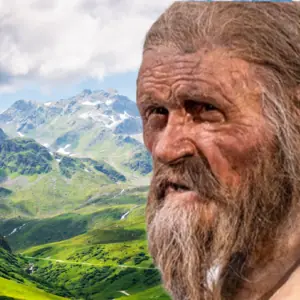 In 2010, Johannes Krause, a member of Svante Paabo’s genetics team at the Max Planck Institute in Leipzig, Germany discovered Neanderthal DNA in the modern human genome. We now know modern Europeans and Asians carry 2 to 4% Neanderthal. There may be outliers with as much as 5%. Otzi the Iceman for example, who lived in the Italian Alps 4.5kya, was founded to have 5.5% Neanderthal genes by Professor John Hawks.
In 2010, Johannes Krause, a member of Svante Paabo’s genetics team at the Max Planck Institute in Leipzig, Germany discovered Neanderthal DNA in the modern human genome. We now know modern Europeans and Asians carry 2 to 4% Neanderthal. There may be outliers with as much as 5%. Otzi the Iceman for example, who lived in the Italian Alps 4.5kya, was founded to have 5.5% Neanderthal genes by Professor John Hawks.
On a matter of particular interest to readers of this site, Prof. Holliday is quoted at Jstor.org:
a discussion of so-called biological races, a problematic paradigm long a mainstay of biological anthropology. The first bioanthropological studies of the Cro-Magnons in the late nineteenth and early twentieth centuries spilt a lot of ink assessing the “racial affinities” of these prehistoric humans.
From the description at Amazon:
During the Last Ice Age, Europe was a cold, dry place teeming with mammoths, woolly rhinoceroses, reindeer, bison, cave bears, cave hyenas, and cave lions. It was also the home of people physically indistinguishable from humans today, commonly known as the Cro-Magnons. Our knowledge of them comes from either their skeletons or the tools, art, and debris they left behind.
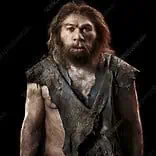 This book tells the story of these dynamic and resilient people in light of recent scientific advances. Trenton Holliday―a paleoanthropologist who has studied the Cro-Magnons for decades―explores questions such as: Where and when did anatomically modern humans first emerge? When did they reach Europe, and via what routes? How extensive or frequent were their interactions with Neandertals? What did Cro-Magnons look like? What did they eat, and how did they acquire their food? What can we learn about their lives from studying their skeletons? How did they deal with the glacial cold? What does their art tell us about them?
This book tells the story of these dynamic and resilient people in light of recent scientific advances. Trenton Holliday―a paleoanthropologist who has studied the Cro-Magnons for decades―explores questions such as: Where and when did anatomically modern humans first emerge? When did they reach Europe, and via what routes? How extensive or frequent were their interactions with Neandertals? What did Cro-Magnons look like? What did they eat, and how did they acquire their food? What can we learn about their lives from studying their skeletons? How did they deal with the glacial cold? What does their art tell us about them?
Holliday offers new insights into these ancient people from anthropological, archaeological, genetic, and geological perspectives. He also considers how the Cro-Magnons responded to Earth’s postglacial warming almost 12,000 years ago, showing that how they dealt with climate change holds valuable lessons for us as we negotiate life on a rapidly warming planet.
Rated a 4 out of 5 at Amazon.
Personal Note – I have backpacked around southern Europe twice, once in 2001, and again in 2003. On the second trip I made it a point to take local trains to the outer regions, where tourists didn’t typically travel. I did this in southern France and northern Italy. I agree with Professor Holliday’s remarks, that many locals outside of the major urban centers in Europe, most assuredly have archaic facial features.
